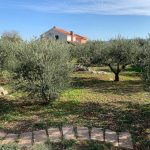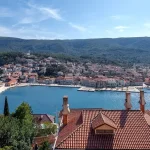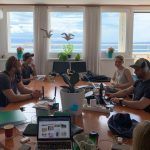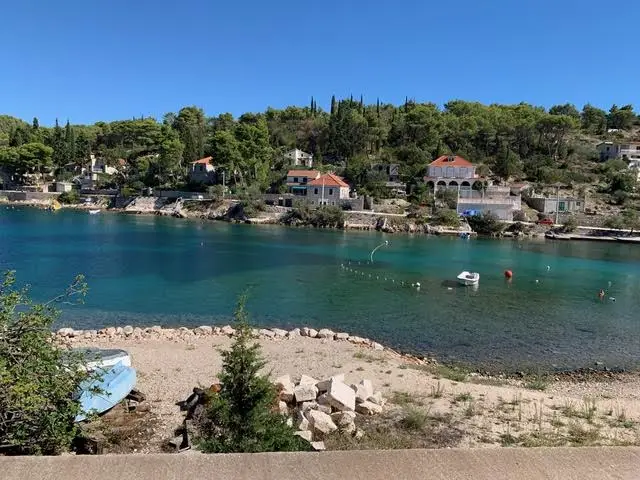
September 22, 2020 – How does Croatia look through the eyes of a digital nomad? TCN is delighted to welcome new columnist Cyndie Burkhardt, who will be sharing her exepriences as a digtal nomad in Croatia. And where better to start – give bees a chance from the idyllic island of Šolta.
Still being a newbie in Split (I’ve lived here since March 1), I’m keen to see as much of the Dalmatian coast as possible. This time of year the islands dotting the Adriatic Sea are calling me. I’ve come to learn that many of them are known for something among Croatia’s vast natural resources and specialties. Šolta has come up several in conversations extolling its reputation for honey. That was all I needed to hear—indigenous food and Croatian culture. I was determined to visit.
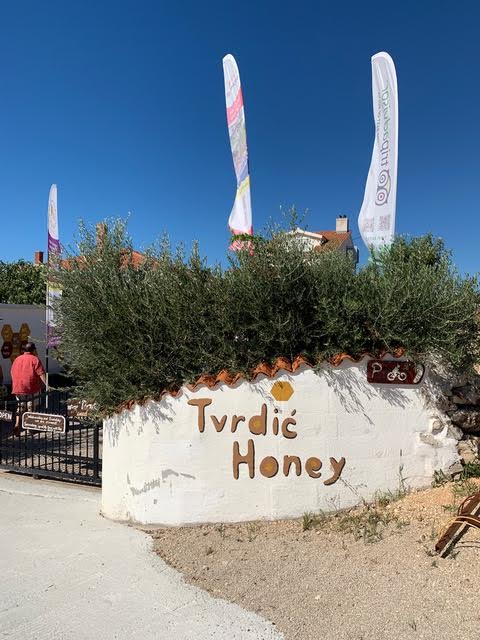
Tvrdić Honey farm
I buy local honey in every country I visit. The most intriguing so far was in Malaysia, where I was introduced to a rare treetop variety. Meaning, industrious “honey hunters,” as they’re called, literally climb to the very top of very tall trees to extract it from a hive. Malaysians claim it has exceptional nutritional value. Taste-wise, it was divine. I view honey similar to wine varietals—environment, land, and weather make it unique. I enjoy experimenting with different flavors in my morning tea, itself from a selection of loose-leaf varietals. Plus, I feel like I’m doing my body a favor. Local honey is supposed to be good for you, possessing vital nutrients that support the immune system and antioxidant benefits.
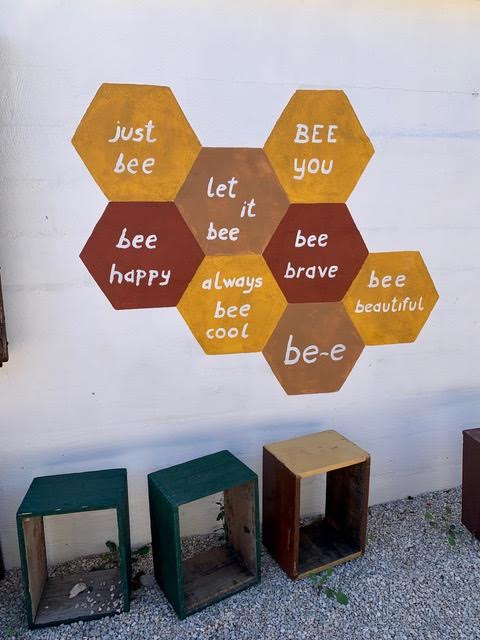
Positive messages reflect family philosophy
I found Tomislav Tvrdić, of Tvrdić Honey, and signed up for his “Give Bees a Chance” tour. I took an early boat from Split and met his father Goran straight away. The minute I saw his warm smile I knew I was in good hands. Goran is a 3rd generation beekeeper, making Tomislav the 4th. His grandfather started the bee farm in 1934 and his father kept it going. Where those two dabbled with it outside of their regular jobs, Goran took it on full-time. He’s clearly passionate about “the animals,” as he calls the bees.
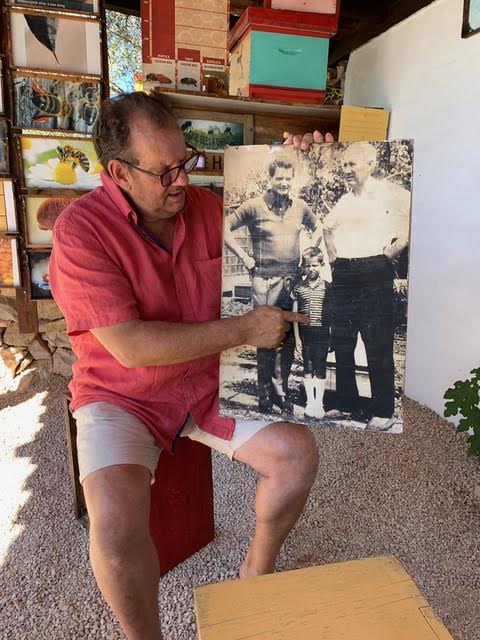
Three generations of Tvrdić family; Goran center
We arrived at the farm he went straightaway to “the store,” a huge fig tree that I could see towering above the roof. When he came bounding down the ladder, he extended his hand with a basket full of the ripe fruit. We chowed down right there, along with his wife and Tomislav, while chatting about bees and the family’s history.
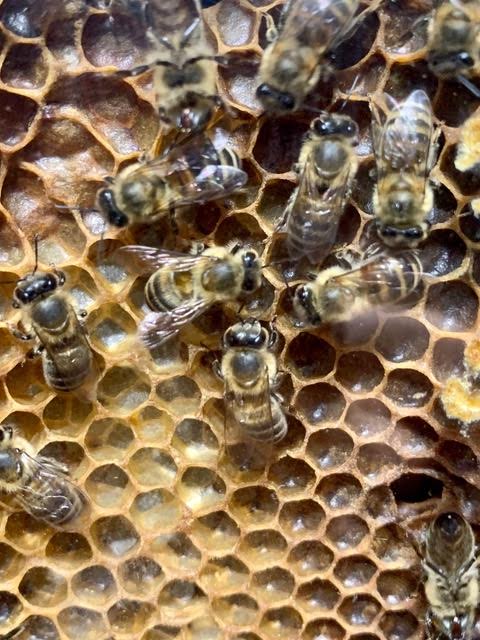
Worker bees in a honeycomb
By the time we moved into the learning center, a modest setup of chairs and props across the yard, we’d established a comfortable conversation. Goran told me about the six products that bees produce. Who knew there were so many? Their bodies emit poison (think bee stings), royal jelly (a top-of-the-line secretion that worker bees deposit directly into the queen as her premium food source), and propolis, a natural antibacterial. Bees also make honey, pollen, and wax.
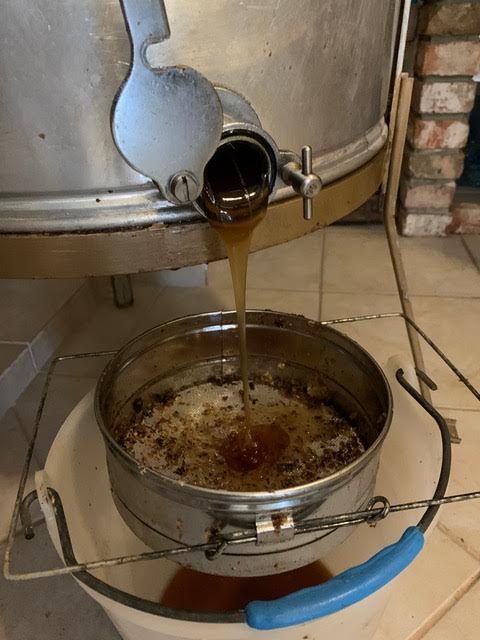
Fresh honey spun from a comb
Goran is a purist and stores pollen in the freezer for maximum freshness and effectiveness. He also warned me to check the temperature of my tea before adding honey. It needs to be under 105°F (40.5°C). Violate these rules and you’ll kill the product benefits, making it pointless to use them. To him and many others, bee products are medicine, especially Manuka honey from New Zealand. That one is used by doctors for antiviral, anti-inflammatory, and antioxidant properties. At prices up to €200 per jar (roughly $237), you would hope that claims of wound healing, cold and flu prevention, and curing oral ailments are accurate.
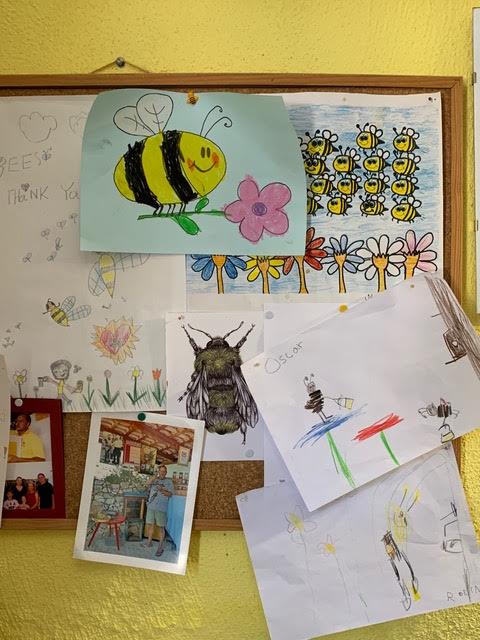
Community board with photos, notes, and kid’s drawings
I’m not a fan of bee pollen. The stuff I’ve eaten was crunchy and pungent, limiting its use to blended foods to make it palatable. Ok for a smoothie, but not my morning tea. Goran fetched a container from the freezer. This pollen was soft and delicious. It nearly melted in my hand and each tiny nugget had a rich, complex taste. Our fingers stained slightly yellow from pinching little bites, similar to the color of turmeric. Mind blown. This, I could eat.
After discussing bee sex and the lifespans of the queen, drones, and workers, Goran and I went into the shop to see a colony at work and taste gooey honey right off the comb.
I noticed a creamy looking product that turned out to be a blend of pollen and honey. In that combination pollen doesn’t need to be frozen. Great, I needed to try it! Šolta’s rosemary grows everywhere and naturally lends itself to ružmarin domaći šoltanski med (rosemary homemade Šolta honey), one of Tvrdić’s main products along with kadulja (sage) honey. Yum. My backpack filled up quickly.
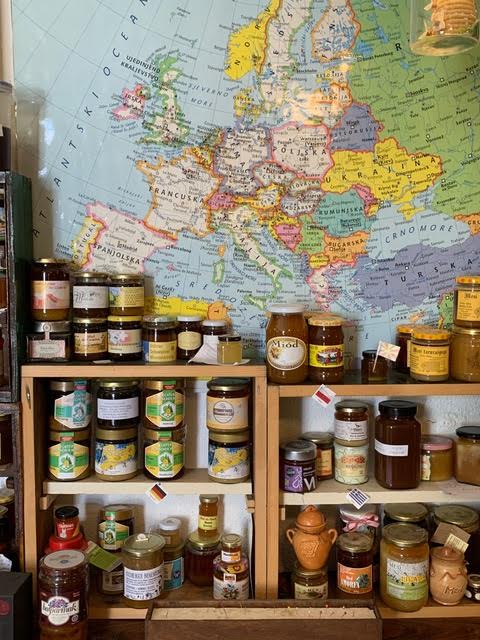
Visitors from around the world send honey from their countries
Inside Tvrdić’s part shop, part museum, I gazed at world maps and a massive, international honey collection while chatting away. I felt a nice connection with Goran and his family and I completely lost track of time. I prepared to leave and apologized for keeping him well past our scheduled tour as the clock ticked toward 2 hours. Oops!
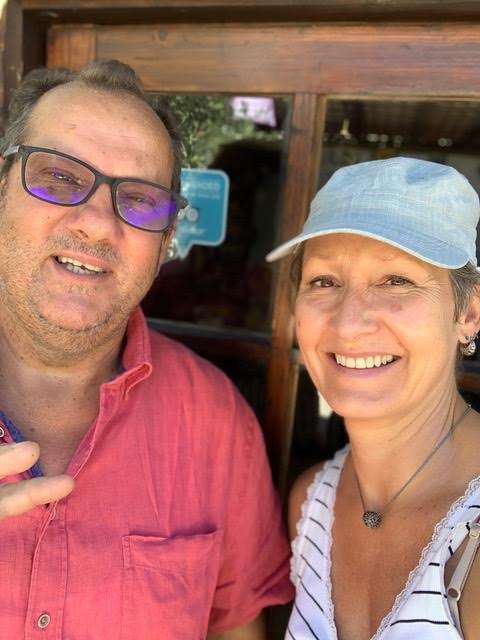
Goran Tvrdić and the author
He seemed completely relaxed and ok with it. For him, life is about doing what you’re passionate about, meeting people, and authentic local experiences. The many cards and personal notes throughout the shop, including drawings from kids and gifts that people have sent from around the world, prove that Goran is onto something. In a final gesture, he sent me off with a container of fresh figs. Could this guy be any nicer? This must be the famous Croatian hospitality I’ve read about.
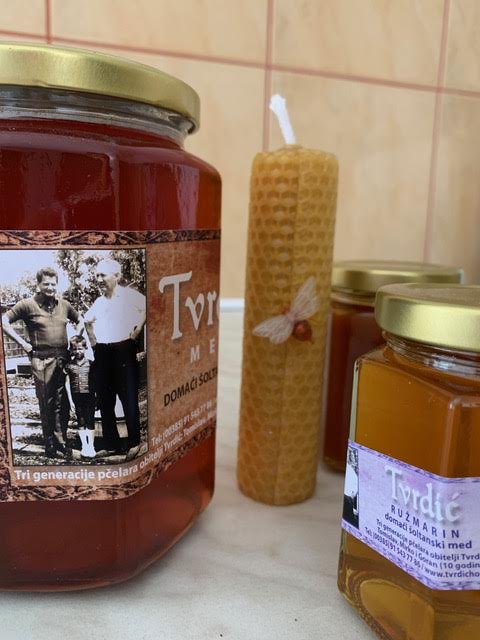
Tvrdić Honey products
When Goran first picked me up at the ferry, he asked about my plans for the day. I mentioned swimming and then lunch after our tour. He dropped me off at a small inlet with clear blue water and pointed out a couple of dining spots. When it was time to eat I headed to Pasarela and settled in for a plate of crni rizot, the traditional Croatian dish I’ve been wanting to try since I arrived here six months ago. It was absolutely delicious. I washed it down with my new favorite drink, Pelinkovać and tonic.
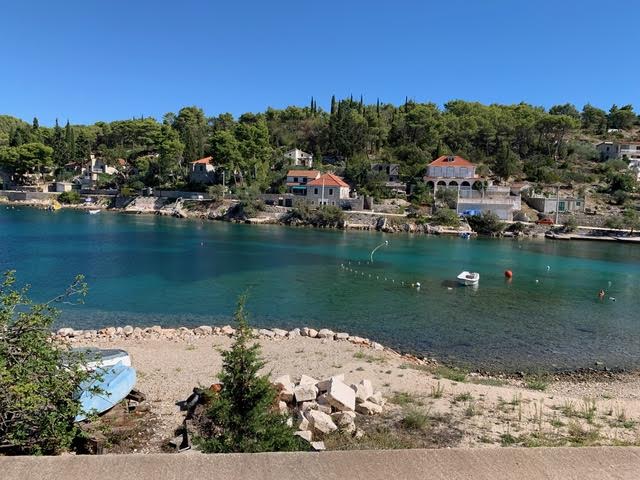
Swimming inlet
I wore a silly grin on my face for the rest of the afternoon, touched by the kindness of strangers and soaking up my perfect Croatian day.
Learn more about Tvrdić Honey and schedule a tour.
Story and photographs ©2020, Cyndie Burkhardt. www.photo-diaries.com.
You can follow the latest from Cyndie’s column, Croatia Through the Eyes of a Digital Nomad here.
For the latest news about digital nomads in Croatia, including that sought-after nomad visa, check out the dedicated TCN digital nomad news section.


